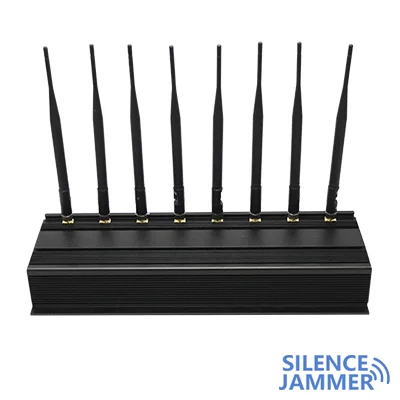Illegal mobile phones in prison: the challenge of technology and governance
Introduction
The presence of illegal mobile phones in prisons enables prisoners to continue their criminal activities, posing a serious threat to prisons and social security. signal jammer This article explores the sources, uses, and existing and potential technical solutions for mobile phones in prisons.
cell phone jammer
Use of mobile phones in prisons
NOMS reports that prisoners use these phones to carry out a range of criminal activities, including commissioning murders, planning prison breaks, importing automatic firearms, and arranging drug smuggling. Wifi jammer Several cases show that prisoners organize criminal activities in prisons, posing a serious threat to social security.
GPS jammerHow mobile phones enter prisons
The mother of a prisoner in Northumberland County Prison claimed that "this place is full of mobile phones." Mobile phones enter prisons in a variety of ways, such as being thrown over the fence or delivered by prisoners using drones. Glyn Travis of the Prison Officers Association (POA) pointed out that drugs and mobile phones are thrown into prisons at will, and drone delivery completely undermines external security.
Technical solutions and costs
The technical solutions proposed by the Prison Service include jamming, grabbing, operator disconnection and intercept and search:
Jamming/jamming: Sending a signal to block mobile phones from receiving base station signals, all mobile phones and SIM cards within the jammer's range will be blocked. This method is cheap and very effective, but may cause interference outside the prison, increasing costs.
Grabbing: Mobile phones are attracted to a fake network, which is selective and can whitelist unaffected phones. Success can be quantified and illegal phones can be monitored, but the cost is high.
Operator disconnection: The Serious Crime Act 2015 introduced the power to force mobile phone operators to disconnect the network, but the relevant regulations have not yet been promulgated. Operators may be reluctant to cooperate, and disconnected phones and SIM cards can be easily replaced.
Intercept and search: Searching visitors and staff, searching cells and prisoners, and training sniffer dogs to find mobile phones, but these measures also have their limitations.
Although these technical solutions seem effective, NOMS said the cost is "disproportionate". For example, the cost of installing and maintaining jammers is hundreds of millions of pounds.
Laws and punishments
The Crime and Security Act 2010 makes possession of a mobile phone in prison punishable by up to two years in prison and/or an unlimited fine. However, Mr Travis of the POA said that prisoners do not worry about being punished for committing crimes in prison. Many prisoners are not severely punished for this, which makes the problem of mobile phones in prison even worse.
Future efforts and reforms
The Prison Service admitted that prisons "need urgent reform" and must "find new ways to find and block mobile phones and equip prison officers with the right tools to deal with these problems." Although the 2012 law allows the use of "signal denial" technology, its actual application remains limited. The POA has been lobbying for signal blockers for many years, but each attempt has failed due to various problems.
Mr Rogers pointed out that the use of technology can see how many mobile phones are disabled and who they belong to, while blocking technology sometimes leaves small spots where the signal breaks through, making the impact difficult to quantify. A spokesman for the Prison Service also said that relevant regulations will be "introduced in due course."